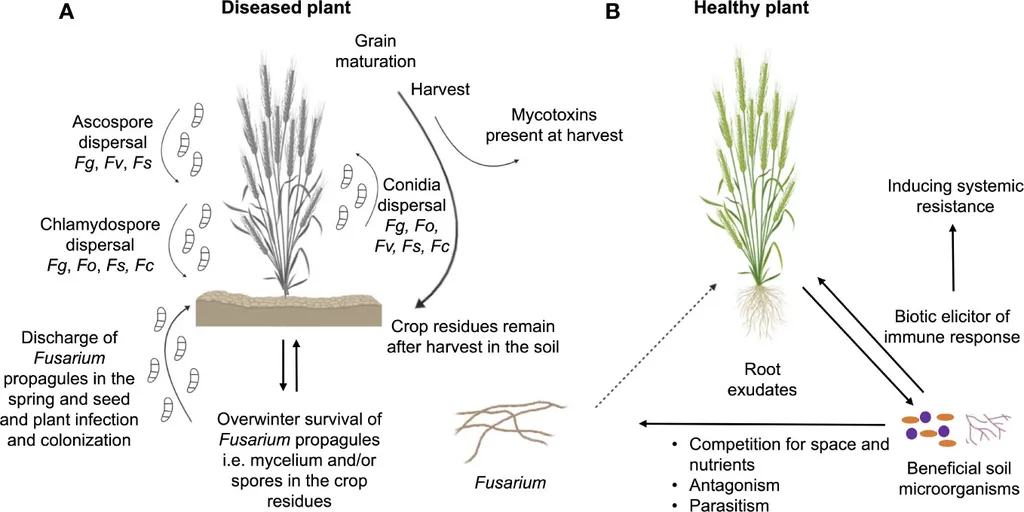In the relentless battle against crop diseases, scientists are making strides in understanding one of agriculture’s most formidable foes: the Fusarium genus of fungi. A recent review published in *Plant Signaling & Behavior* sheds light on the growth, development, and infection processes of these pathogens, offering hope for more effective disease management strategies. The research, led by Zhuo Li from the Department of Plant Protection, could reshape how farmers and agronomists tackle Fusarium-related crop losses.
Fusarium species are notorious for causing devastating diseases like banana wilt and Fusarium head blight, which not only reduce crop yields but also contaminate food with harmful mycotoxins. These fungi pose a significant threat to global food security and public health. “Understanding the molecular mechanisms behind Fusarium’s virulence is crucial for developing targeted solutions,” Li explains. The review highlights recent genomic advancements that have uncovered key genes involved in secondary metabolism, hyphal development, reproduction, and virulence.
One of the most intriguing aspects of this research is its focus on *Fusarium oxysporum* and *Fusarium graminearum*, two of the most economically damaging species. By elucidating the pathways these fungi use to infect plants, scientists can identify potential targets for new fungicides and biocontrol agents. “This knowledge could lead to the development of more precise and sustainable disease control methods,” Li adds.
The commercial implications of this research are vast. Fusarium diseases cause billions of dollars in losses annually, affecting staple crops like wheat, barley, and bananas. By understanding the pathogen’s life cycle and infection strategies, agricultural companies can develop innovative solutions that minimize yield losses and ensure food safety. The review also emphasizes the importance of integrating genomic data with traditional breeding programs to enhance crop resistance.
Looking ahead, this research could pave the way for breakthroughs in disease management. For instance, the identification of specific genes involved in pathogenicity could lead to the development of genetically modified crops with enhanced resistance. Additionally, the insights gained from this study may inform the creation of new fungicides that target the pathogen’s unique biochemical pathways, reducing the reliance on broad-spectrum chemicals.
As the global population continues to grow, the demand for sustainable and efficient agricultural practices will only increase. Research like this, which bridges the gap between fundamental science and practical applications, is essential for meeting these challenges. By unraveling the complexities of Fusarium’s infection process, scientists are not only advancing our understanding of plant pathology but also laying the groundwork for a more resilient and productive agricultural future.

